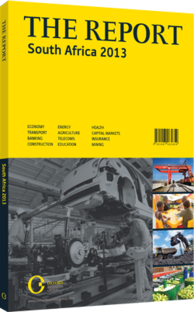Turn on, tune in: Broadcasters provide a platform for a diverse group of voices
Long under tight state control, South Africa’s broadcasting market has become livelier and more diverse over the past three decades, with private stations emerging to challenge the incumbent South African Broadcasting Corporation (SABC). Pay-per-view television channels have sprung up, though the free-to-air stations run by SABC continue to command large market shares and influence. “Broadcasters are the primary source of information for South Africans, and will remain so in the medium term at least,” Nadia Bulbulia, executive director of the National Association of Broadcasters (NAB), told OBG.
Radio Stars
Radio, with its low costs and ease of use to the customer, has a larger reach than any other medium. Some 89% of adults in South Africa tuned in during an average week as of the end of 2012, according to the South African Audience Research Foundation (SAARF), a market research organisation. The country’s 16 commercial radio stations attracted 85.4% of all adults, while 25.1% listened to the 190 or so thriving community radio networks. Successive rounds of liberalisation saw SABC sell off regional radio stations and licences granted for new commercial radio stations. Major stations include: Ukhozi FM, a Zulu-language station based in Durban, with a listenership of 6.8m, the SABC-owned English-language Metro FM (5.8m), Xhosa-language Umhlobo Wenene FM (4.1m) and Sesotho-language Lesedi FM (3.5m). A major player in the radio-broadcasting sector is the media group Primedia, which is headquartered in Johannesburg. Operating over 50 brands, the group covers a diverse range, with a particularly large number of localised and community-focused channels. “Less mass market and more specialised radio formats are attractive to advertisers as they can target more directly,” the CEO of Primedia, Kuben Pillay, told OBG. Since it was delisted after being purchased by a private equity consortium in 2007 for R7bn ($853.3m), Primedia has seen its profits grow by 40-50%. According to recent press reports as of March 2013, Primedia is considering relisting on the Johannesburg Stock Exchange within the next three years, a move which could see a valuation of upwards of R10bn ($1.22bn) – a sign of the attractiveness of media firms in the country’s market.
Television
Remarkably, South Africa was one of the last African nations to introduce nationwide television broadcasts in 1976. The government had previously been concerned that TV would erode the influence of radio, tightly state-controlled through SABC, whose monopoly on TV came to an end in 1986, with the launch of subscription-based M-Net, owned by local media firm Naspers, which also owns the Media24 newspaper stable (see overview). MultiChoice sprung from M-Net and in 1995 the company launched DS tv, a satellite pay-TV service. DS tv is still a market leader, with a range of “bouquets” (packages of channels).
There are four free-to-air terrestrial channels: SABC1, SABC2, SABC3 and e.tv, the country’s only independent free-to-air station. SABC1 is watched by 66% of South Africans, with daily viewing averaging 43 minutes, carries a broad range of programming in various languages; SABC2 is watched by 65%, with daily viewing averaging 30 minutes, and has a slant towards local content, including carrying much of the public broadcaster’s Afrikaans programming; while SABC3 (57%, 22 minutes) shows more English content. Nearly matches SABC’s two main channels for viewing figures, e.tv attracts 63% of adults for an average of 37 minutes daily. DS tv has made substantial inroads recently, with 26% of adults watching as of March 2013, for an average of 48 minutes. Growth has been driven by the introduction of a range of lower-cost packages, which are accessible to all but the poorest segments, as well as increasing diversification of channel offerings.
Rising Competition
Bulbulia expects the upcoming switchover to digital to substantially increase the number of free-to-air channels available, further increasing competition and raising demand for content. The digital roll-out has seen some delays due to technical issues, but should move forward in the coming years.
You have reached the limit of premium articles you can view for free.
Choose from the options below to purchase print or digital editions of our Reports. You can also purchase a website subscription giving you unlimited access to all of our Reports online for 12 months.
If you have already purchased this Report or have a website subscription, please login to continue.

